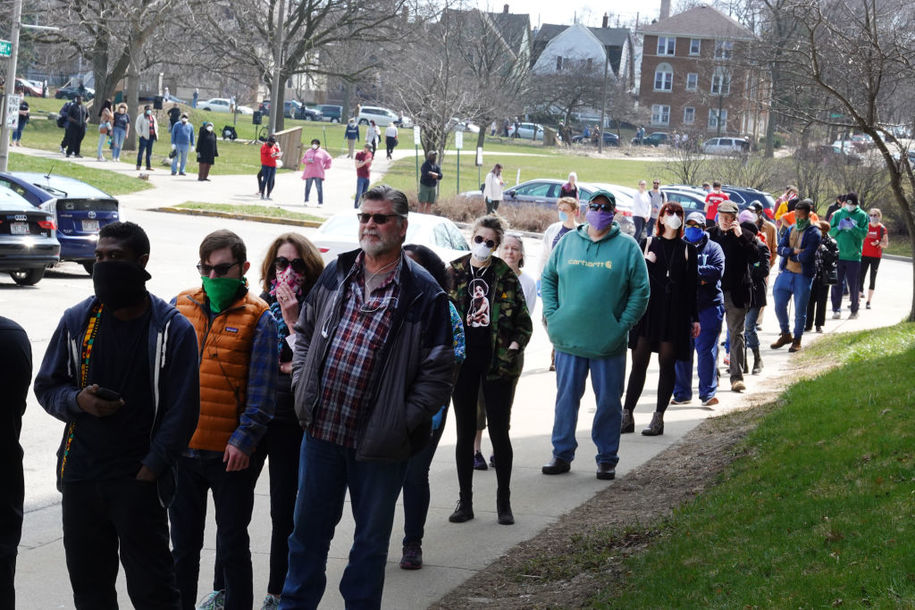[ad_1]
Both The Washington Post and The New York Times have postmortem pieces. (In this case, the Times version is a bit more substantive than the Post‘s, which dwells too long on partisan bluster.) Both suggest Democratic get-out-the-vote-by-mail efforts were more substantive and effective than the Republican counterparts.
But this is especially important because, as the Times notes, Wisconsin Republicans recently forced onerous new restrictions on absentee ballots in the state. To request a mailed ballot, a voter now has to upload a copy of their photo ID; to return one, the ballot must be signed by a witness.
How does a voter make a copy of their photo ID? How does a voter upload that photo to a specific website? Who troubleshoots it, if it doesn’t work? How do you even get to the website you’re supposed to be using?
All of these steps impose a technology tax on voters. You need a smartphone, or a computer and scanner. You need enough savvy to know how to both take the picture and send it. It is not a given that all Americans will know how to do that, but poorer Americans are less likely to own the technology required—and elderly Americans, far more conservative than younger counterparts, are less likely to know how to do each step.
The Democratic get-out-the-vote efforts, says the Times, “were often conducted through one-on-one video calls” as volunteers walked through the process with individual voters. The Republican side … didn’t.
While would-be Wisconsin voters who couldn’t or didn’t want to navigate the process could wait in line on Election Day, as many did for hours, voters in high-risk groups were likely not as willing to risk a deadly disease for the sake of casting a ballot. The state’s oldest voters are in precisely such a risk group.
When Republicans forced the state to vote in-person during a pandemic after raising the bar for absentee voting in a way that disproportionately affected less tech-oriented citizens, they were writing up a perfect scenario for disenfranchising their most reliable voters.
What we don’t know is how much this particular dynamic affected the vote totals, compared to the myriad other factors also working against Republicans. Antipathy toward Trump continues to be a strong apparent force, with Republicans regularly losing the votes of past Trump voters now crossing over or staying home. Republicans complained (no, really) that Democratic candidate Bernie Sanders staying in the race unfairly boosted Democratic turnout. Even holding the election was enraging to many voters from polling place interviews; the move by state Republicans to quell voting by making citizens choose between voting and their personal health and safety may itself have resulted in vengeance-taking in the voting booths.
But it does suggest that Republican efforts nationwide to block vote-by-mail expansions for the November elections, when pandemic dangers are still expected to be widespread, might not be nearly as brilliant a move as the usual vote suppression teams believe it to be. It is older Americans who are going to resist in-person voting the most. It is younger Americans who will be most able to jump through whatever hoops Republican-held legislatures put between them and the vote.
It isn’t clear the balance tilts toward Republicans—even if the Republican-led government can somehow install a scaffolding of basic competence, in their management of the pandemic, between now and November. Trump himself seems determined to thwart any such effort, so all of this speculation may be moot. Even Republicans may not be able to stomach voting for Republicans if their leaders continue to act with such obvious contempt for public health and safety.

















